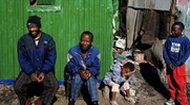|
However, the widespread availability of ARVs has significantly shifted these effects. Individuals who once faced a bleak prognosis now lead full, productive lives. Parents can raise their children, work, and contribute to their communities, preventing countless orphans. The fear and despair that once permeated society have been replaced with hope and the possibility of a normal life. This transformation has had a ripple effect, allowing families to rebuild and communities to regain stability. Healthcare systems, once overwhelmed by acute opportunistic infections, are now focusing on chronic disease management and prevention. Yet, the long-term effects are still unfolding. An ageing population of people living with HIV presents new health challenges, including non-communicable diseases and age-related complications alongside HIV. The psychological impact of living with a chronic disease, coupled with the lingering stigma, continues to affect mental health and well-being. Furthermore, the economic burden on households, even with free ARVs, remains considerable due to transportation costs to clinics, lost wages during appointments, and the general impact of poverty on health outcomes. Cont/... |
South Africa HIV |
South Africa HIV |
South Africa HIV | South Africa HIV |
|
|

|
Overall HIV peak prevalence occurs in 35 to 39 year olds at 31.5% (females at 39.4% and males at 23.7%) but differs by sex, peaking at an older age among males (45 to 49 years) at 24.8% compared to females (35 to 39 years). This disparity in HIV prevalence by sex is most pronounced among young adults: HIV prevalence among 20 to 24 year-olds is three times higher among females (15.6%) than males (4.8%). Fortunately numbers are declining in correlation with rolling out better HIV education and stressing the importance of condom use. Among individuals aged 15-64 years with two or more sexual partners in the last year, 55.6% self-reported condom use at last sex. Of those aged 25-49 years, both males (53.0%) and females (53.4%) had similar proportions of condom use. 68% of young males (15-24 years) with multiple partners reported condom use at last sex compared to 47.3% of females of the same age. Only 33.3% of older adults (50-64) years with multiple partners used condoms at last sex. Whilst HIV numbers in South Africa are falling, the burden of HIV continues to disproportionately affect different geographical regions and high risk groups, especially black Africans, adolescent girls and young women. In the video (below), a group of South African children talk about HIV / AIDS, how its affected their communities and families, and the impact of programs to address the issue. Current figures suggest is levelling out and dropping for some age groups. Looking to the future, South Africa's HIV/AIDS response is focused on sustaining the impressive gains made while striving for an end to the epidemic as a public health threat. This vision is guided by global targets, aiming for 95% of people living with HIV to know their status, 95% of those diagnosed to be on ARV treatment, and 95% of those on treatment to achieve viral suppression (the "95-95-95" targets). Achieving these targets is crucial for individual health and for preventing further transmissions, as a virally suppressed individual cannot transmit HIV sexually (Undetectable = Untransmittable or U=U). Key strategies for the future include intensified prevention efforts. This involves promoting consistent condom use, expanding access to Pre-Exposure Prophylaxis (PrEP) for those at high risk, scaling up voluntary medical male circumcision (VMMC), and implementing comprehensive sex education. A critical focus will be on reaching adolescent girls and young women with tailored prevention messages and services. Furthermore, integrating HIV services into broader primary healthcare systems will be vital to ensure people living with HIV receive holistic care, including screening for co-morbidities like TB, non-communicable diseases, and mental health support. Addressing the social determinants of health – poverty, inequality, and gender-based violence – will also be paramount, as these structural issues continue to fuel the epidemic. Research into new prevention technologies, including long-acting injectables and a potential vaccine, offers exciting prospects, though these are still some way off. |
 While public perceptions have evolved from viewing HIV as an automatic death sentence to acknowledging it as a manageable chronic condition, deep-seated stigma persists. This social stigma can deter individuals from testing, disclosing their status, and adhering to treatment, ultimately undermining prevention and care efforts. It also fuels self-stigma, leading to feelings of shame and isolation.
While public perceptions have evolved from viewing HIV as an automatic death sentence to acknowledging it as a manageable chronic condition, deep-seated stigma persists. This social stigma can deter individuals from testing, disclosing their status, and adhering to treatment, ultimately undermining prevention and care efforts. It also fuels self-stigma, leading to feelings of shame and isolation.







